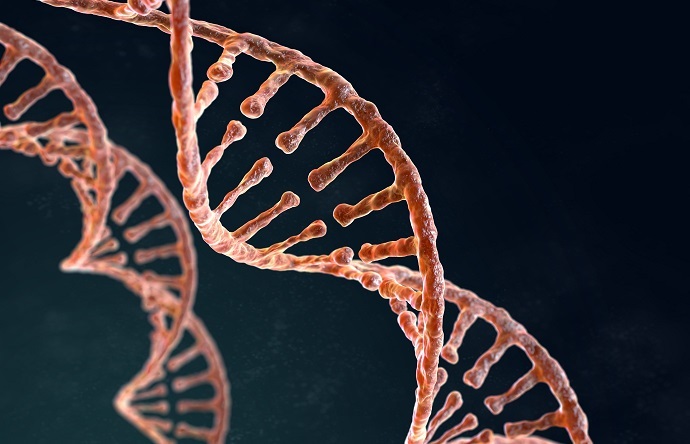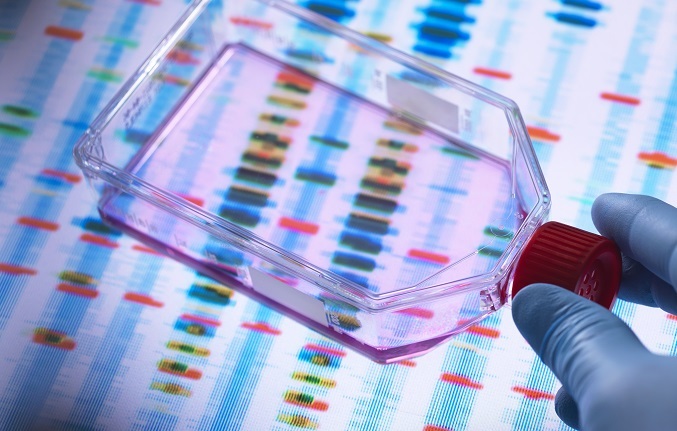
 Data Structure
Data Structure Networking
Networking RDBMS
RDBMS Operating System
Operating System Java
Java MS Excel
MS Excel iOS
iOS HTML
HTML CSS
CSS Android
Android Python
Python C Programming
C Programming C++
C++ C#
C# MongoDB
MongoDB MySQL
MySQL Javascript
Javascript PHP
PHP
- Selected Reading
- UPSC IAS Exams Notes
- Developer's Best Practices
- Questions and Answers
- Effective Resume Writing
- HR Interview Questions
- Computer Glossary
- Who is Who
What is the full form of GMO?
Introduction
Genetically Modified Organism (GMO) is the process of altering DNA and naturally occurring protein production to create medically important proteins and proteins for other uses. A gene is extracted from an organism and replaced with DNA from the same or another organism.

The DNA thus produced is called rDNA or Recombinant DNA and the procedure is called recombinant DNA technology. This field of study is the major part of Biotechnology. Biotechnology can be defined as the application of biological factors to scientific and engineering principles to provide better products and services.
Definition of GMO
In early times, genetic traits of livestock and domestic animals were improved by practising selective hybridization. But after the advancement of modern biotechnology, humans are able to manipulate genetic changes to produce desired types of animals.
New excess DNA can be inserted into the genome of organisms to produce stable genetic changes as desired. This is called transgenesis.
The foreign DNA introduced in this way is called a transgene, and the organisms produced by it can be called genetically engineered or genetically modified organisms.
The various steps involved in creating genetically modified organisms are,
Identifying the desired gene and isolating it.
Selective or direct injection of a vector (usually a virus).
Fusion of the desired gene with the promoter gene.
Injection of the modified vector into tissues, embryos, cells or mature organisms.
Functional description of integration and expression of foreign genes in transgenic animals or tissues.
Mutants have been developed in hamsters, mice, rabbits, pigs, cows, goats, sheep and fish.
Types Of GMO
There are two types of genetic modification in plants. They are
Direct or vector less gene transfer
In direct or vector less transfer, the desired foreign gene is introduced into the ovine plant without the aid of a vector.
Genetic modification by chemical means
Certain chemicals such as polyethylene glycol and dextran sulphate induce the absorption of DNA into protoplasts in plants.
Liposome-mediated genetic modification method
Synthetic phospholipid liposomes are vesicles useful in genetic modification. The gene or DNA is transferred from the liposome to the vesicles of the plant cells.
Indirect or vector-mediated gene transfer
Indirect or vector gene transfer is the process of transferring the gene using Plasmid Vector.
Gentric transformation of plants requires different types of vectors. Ti plasmid of Agrobacterium tumefaciens is the most commonly used vector.
This bacterium contains a plasmid called the Ti plasmid (which causes damage) and a piece of large transfer DNA. These are transferred to the plant genome of damaged cells and cause plant infections.
The plant genome injected by the T-DNA portion of bacteria's plasmid and attacks the cells in infected field. It is the natural ability of bacterium. Due to these reasons, bacteria are also known as the natural genetic engineer of plants.
Benefits of GMO
Genetic engineering is a powerful tool to understand the study of Gene developmental processes and gene expression of higher organisms.
Genetic modification helps to improve genetic traits in organisms.
Transgenic organisms are good models for understanding human diseases and researching new treatments for human diseases.

Proteins produced by transgenic animals have important applications in the medicine and pharmaceutical industry.
Safety of vaccines tested using genetically modified mice.
When non-transgenic animals were tested with toxic substances, they found that the transgenic animals, if they had the gene for the substances, were more sensitive and the effects of the toxins on them than they were sensitive to those substances.
Genetic modification plays an important role in improving the quantity and quality of eggs, wool, meat and milk production and screening for drug resistance.
Concerns Surrounding GMOs
Genetically modified organisms (GMOs), have been developed to contribute to environmental management, bioremediation, agriculture, aquaculture and forestry in developed and developing countries.
However, when intentionally or unintentionally GMOs are released into the environment, they sometimes cause adverse ecological effects.
Creation of new or deadly pests and pathogens. Exacerbating the effects of living pests by interbreeding with genetically modified organisms.
Contamination of non-target microorganisms such as soil-dwelling organisms, harmful plants, birds and other animals.
Disturbance of bio-community within agricultural / agroecological zone.
Causing irreparable loss or changes in microdiversity or genetic diversity within the microbiota.
Creating threats against human welfare.
The release of genetically modified organisms into the environment can have a long-term impact. Because it takes a long time for these organisms to multiply, invade, spread, and sometimes enter the DNA of other organisms and cause changes.
Genetically modified Organisms can cause changes in existing organisms and thereby create new species that can affect the environment.
Conclusion
A Genetically Modified Organism (GMO) is an organism whose genes have been altered by genetic engineering. Genetic engineering is the process of altering DNA and naturally occurring protein production to create medically important proteins and proteins for other uses. Genetic engineering is a powerful tool to understand the study of Gene developmental processes and gene expression of higher organisms. Genetic modification helps to improve genetic traits in animals. Genetically modified Organisms can cause changes in existing organisms and thereby create new species that can affect the environment.
Frequently Asked Questions - FAQs
Q1. What is animal cloning?
Ans. Animal cloning is the process of creating multiple organisms genetically from one organism either naturally or artificially. Many organisms in nature carry out asexual reproduction called copulation.
Q2. What are stem cells?
Ans. Stem cells are undifferentiated cells found in most multicellular organisms. Although they undergo many indirect divisions, they continue to maintain their distinctiveness.
Q3. What is gene therapy?
Ans. If a person is born with a genetic disease at birth, a procedure called gene therapy is used to correct it. A person with one or more mutated alleles can be corrected by injecting the normal gene into their cells.

